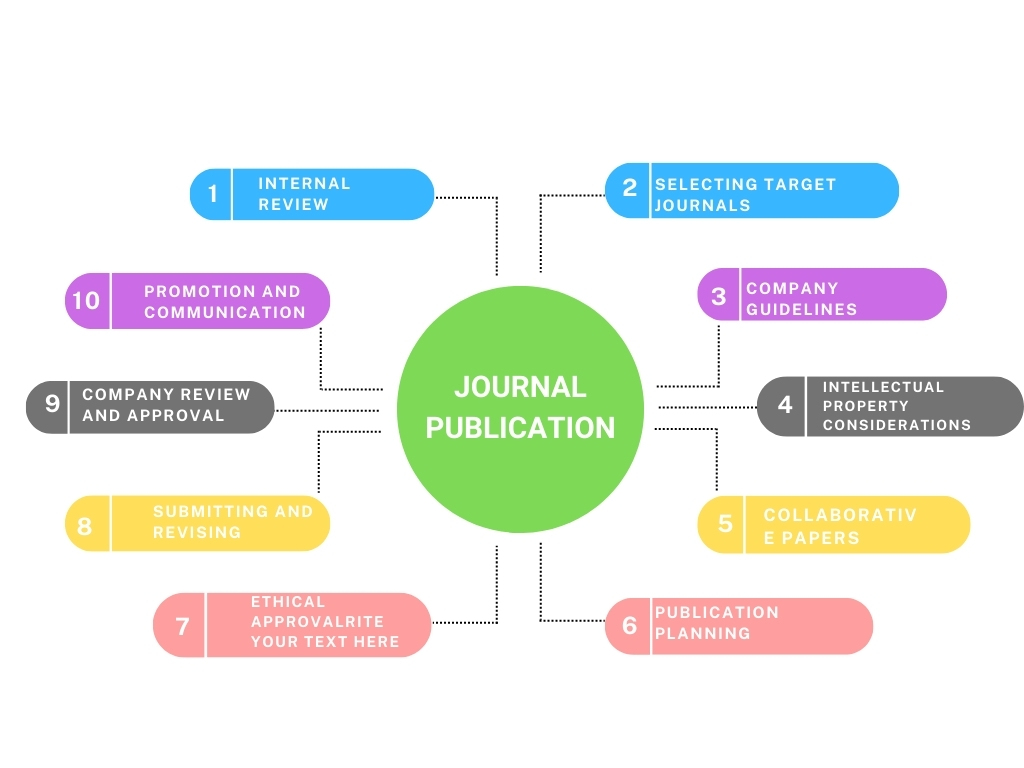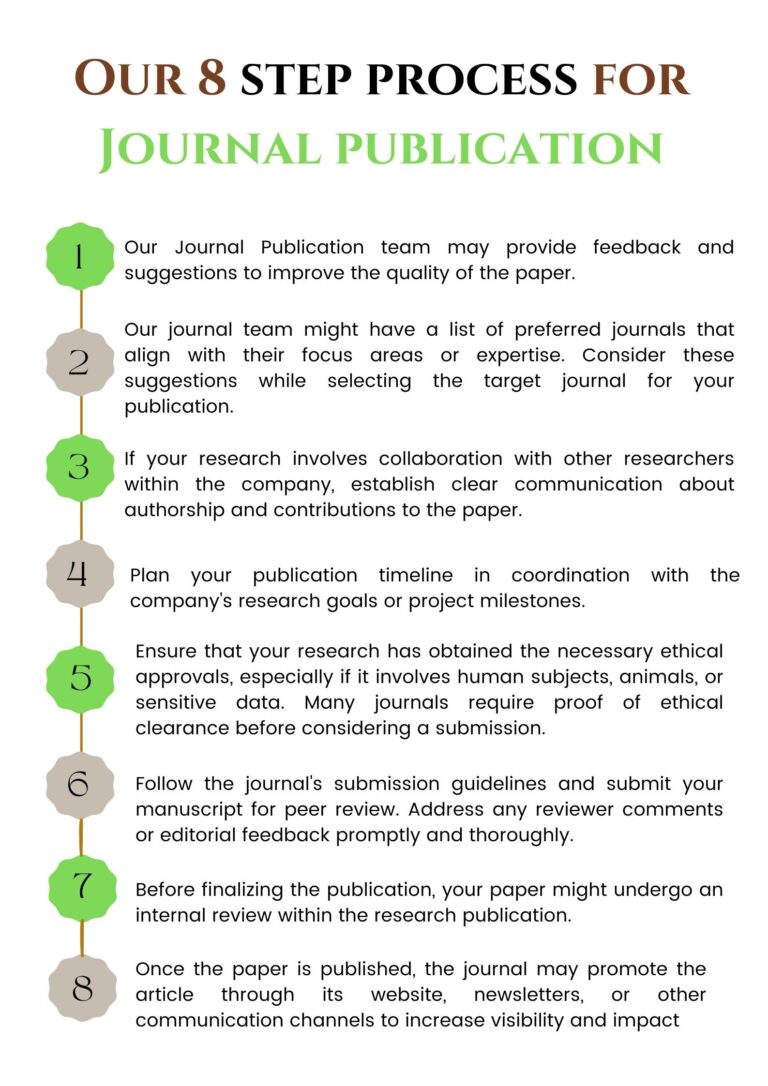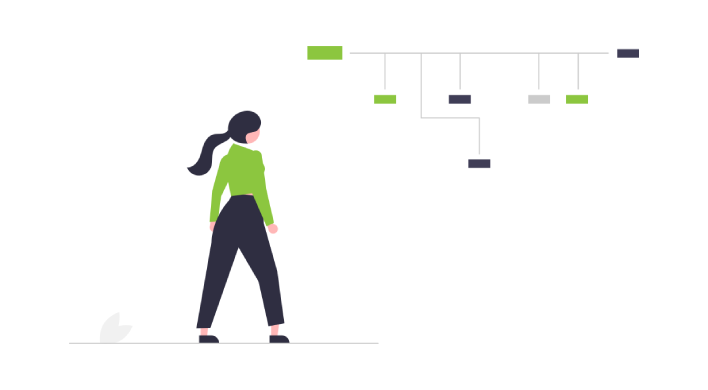Journal Publication
Journal publication is crucial; it validates their research, demonstrates scholarly competence, and enhances career prospects. Publishing in reputable journals showcases their contributions to the academic community, strengthens their CV, and increases their chances of securing academic positions or pursuing further research opportunities.

Unlocking the Secrets of Successful Journal Publication:
Are you a future scholar or researcher trying to discover the keys to a successful journal publication? Look nowhere else! We will walk you through the complex world of academic publication with Saaira Technologies’ complete handbook, revealing the crucial tactics and insider information that will enable you to transfer your research from the lab to the pages of esteemed journals. Saaira Technologies has put together this comprehensive guidebook to provide you with the knowledge and tools you need to succeed since we are aware of the challenges and pitfalls involved with navigating this competitive industry.
We cover every angle, from selecting the best magazine to writing an excellent article, understanding the peer review procedure, and advertising your published work. Therefore, this manual will act as your compass, guiding you toward successful journal publishing, whether you are an experienced researcher or a recent graduate starting your academic adventure. Prepare to discover the answers and leave your imprint on the academic community!
Understanding the Importance of Journal Publication
The publication of research in respectable journals is essential to the academic world’s success. Journal articles improve the body of knowledge and are essential to a person’s academic career. A successful publication can create opportunities for funding, collaborations with others, and increased academic visibility. Additionally, it enables researchers to communicate their discoveries to a larger audience, having a significant influence on their respective professions.
Acknowledging the importance of journal publishing requires understanding its function in disseminating knowledge. Academics enhance the body of knowledge by publishing their findings, expanding on previous research, and laying the foundation for future advancements. Publication in respected journals gives the researcher’s work legitimacy and is often considered a reliable source of knowledge.
Journal publishing not only adds to the body of knowledge but is essential for professional progression as well. For academics, tenure, and advancement often require publication in high-impact journals. It exhibits efficiency, knowledge, and the capacity for exhaustive study. Additionally, publications raise one’s profile in the academic world, which promotes partnerships, conference invites, and speaking opportunities. Therefore, for researchers looking to make a name for themselves in their professions, recognizing the significance of journal publishing is essential.
Journals for publication:
Journals for publication are among the academic forums that disseminate research findings from many industries. These reputable venues provide academics and researchers the chance to share their original research, advance knowledge, and get recognition in their disciplines. Researchers may find good publications that are pertinent to their study using databases like PubMed, Scopus, and Google Scholar.
These publications address a variety of subjects, some of which are very specialized or cross-disciplinary. Others focus on open-access publications, which provide free access to readers anywhere.

Journals for free publication
Free-access journals, sometimes called “open-access journals,” provide readers with full access to their published material without asking them to subscribe or pay a fee. These journals don’t charge author fees or article processing costs (APCs) to publish their research. Open-access journals play a vital role in enhancing knowledge sharing by providing easy access to research for a wide range of readers, including scholars, students, and the general public.
Researchers seeking to publish their work without cost should investigate the numerous open-access publishing platforms that foster open science and open research, including PLOS ONE, the Directory of Open Access Journals (DOAJ), and BMC (Biomed Central), among other alternatives. These publications are crucial for increasing research accessibility and fostering collaboration across diverse academic groups.
Fast track publication journals
Publications that provide a faster peer review and publishing procedure for chosen papers are known as “fast-track” publications. To hasten the dissemination of high-caliber research results, these publications strongly prioritize the effectiveness of the peer review process. The goal is to reduce the time between submission and publication, allowing important research to reach readers and the scientific community more quickly.
When their study targets urgent or time-sensitive concerns or when they wish to give their findings precedence, authors often pick fast-track journals. Fast-track journals speed up the review process, but it’s important to remember that they nonetheless uphold strict peer review criteria to guarantee the reliability and quality of published research.
Key Elements of a Successful Journal Publication
Understanding the main components of a successful publication is crucial before delving into the nuances of journal publishing. When properly handled, these factors improve the research’s impact and prospects for adoption. Let’s examine the essential components of successful journal publishing.
Originality and Significance
A good publication should include novel research that advances the body of already-known knowledge. The study should fill a significant knowledge gap, provide fresh perspectives, or refute accepted hypotheses.
Clarity and Coherence
To make sure that the core message is obvious, the research should be organized and presented coherently. Each portion of the essay should logically flow into the next and support the thesis statement.
Methodological Rigor
The research approach ought to be reliable and fit the research subject. It is important to explicitly disclose the study’s design, data collection, and analytic methods to enable replication and validation.
Sound Conclusions
The data and analysis used in the study should back up the results It is important to evaluate the results appropriately and without bias or exaggeration.
Writing Style and Language
The essay needs to be well-written with clear, grammatically sound phrases. Avoiding jargon and superfluous technical phrases will make the language more understandable to the intended audience.
Researchers may improve their chances of having their work accepted and having a significant influence on their disciplines by concentrating on these essential components. In the sections that follow, we’ll go through the journal publication’s numerous features in more depth, offering helpful advice and ideas to help you comfortably handle the publishing process.
Choosing the Right Journal for Your Research
A critical step in publishing is selecting the right journal for your study. The publication you choose may have a significant impact on your work’s exposure, readership, and influence. When selecting the best journal for your study, keep the following important elements in mind:
Scope and Focus
Make sure the journal’s breadth and concentration match your study. If your work satisfies the journal’s publication requirements, read the journal’s mission statement, goals, and content.
Reputation and Impact
Think about the journal’s standing and impact factor. Journals with a higher impact factor often draw more readers and citations, which increases the exposure of your work. But it’s crucial to strike a balance between the influence of the journal and its applicability to your field of study.
Target Audience
Analyze the journal’s intended readership. Will readers find your research interesting? Think about the demographics of the journal’s audience, such as their geographic location, academic specializations, and research interests.
Publication Frequency and Turnaround Time
Analyze the journal’s publishing schedule and response time. Select a journal with a quicker review and publishing procedure if timely publication is essential for your study.
Open Access Options
Think about the open-access alternatives the journal provides. Your work is more accessible and noticeable when it is published in open-access journals, which can draw in more readers.
Making a shortlist of possible journals that support your study is advised before selecting one. Examine each journal’s objectives and scope, review recent papers, and ask peers or mentors for their suggestions. To ensure that your study reaches the proper audience and has the most effect, choosing the correct journal ultimately needs careful analysis.
Writing an Effective Research Paper
Writing a research paper is a talent that has to be honed through repetition, close attention to detail, and adherence to predetermined rules. A well-written essay improves your chances of being published and makes sure that the academic community is adequately informed about your findings. The following suggestions can help you create a persuasive research paper.
Start with a Clear Structure
Outline your paper’s structure before you start. It should be broken up into the following sections: introduction, literature review, methodology, results, analysis, and conclusion. It will serve as a guide for your writing. and support the continuity of reasoning.
Craft a Compelling Introduction
The beginning should pique the reader’s curiosity while setting the scene for your investigation. The research issue should be stated in clear terms, along with the study aims and hypotheses.
Conduct a Thorough Literature Review
A literature review shows that you are aware of the current research being done on your subject. Identify significant research, hypotheses, and knowledge gaps. Analyze and synthesize the literature critically to place your findings in a larger context.
Describe the Methodology in Detail
The methods used to collect data, perform analysis, and arrange the research should be succinctly and clearly explained in the methodology section. Make sure the process is visible and repeatable.
Present the Results Clearly
Make excellent use of tables, figures, and graphs to convey your findings. Each graphic component should have a clear name and explanation to make the data more intelligible. Don’t repeat details that are already shown in the text.
Interpret the Findings
Interpret the results in light of your study goals and hypotheses in the discussion section. Compare and contrast your findings with those of earlier research, emphasizing the importance and ramifications of your conclusions.
Write a Strong Conclusion
The key conclusions, a restatement of the study’s goals, and a discussion of its consequences should all be included in the conclusion. Avoid including unique information or making claims in your research report that lack supporting data.
Revise and Edit
Write your initial draft, then go back and edit it for coherence, clarity, and conciseness. Check for typos, inconsistencies, and grammatical mistakes. Ask for input from mentors or coworkers to make sure your essay is polished and properly organized.
These recommendations can help you make your research paper better and raise the likelihood that it will be published. Remember to follow all formatting standards, word limitations, and citation style specifications supplied by your chosen publication. Although it takes time and careful attention to detail to write an important research article, the benefits of publishing make the work worthwhile.
Tips for Crafting a Compelling Abstract
The abstract is crucial to a journal publication since it often acts as your research’s initial point of contact with prospective readers. A well written abstract may draw readers in, persuade them to read the whole article, and raise the profile and impact of your study. Here are some pointers on how to write an interesting abstract.
Keep it Concise
Your study should be succinctly summarized in the abstract. Aim for a word count of between 200 and 250 while following the detailed instructions supplied by your target publication.
Follow a Structured Format
Use the following parts to organize your abstract: background, aim/objective, methodology, findings, and conclusion. This approach offers a concise and well-organized summary of your findings.
Highlight the Significance
Indicate the importance and originality of your study in clear terms. Give further details on the significance of your research and how it will add to the body of knowledge already available.
Provide Key Findings
Write a summary of your research’s key results. Emphasize the key findings and their ramifications. Keep your description concise and free of technical jargon.
Avoid Citations and Abbreviations
The abstract shouldn’t need any citations or abbreviations to be understood and be self-contained. Save these facts for the paper’s main body.
Use Clear and Accessible Language
Avoid using too many technical phrases and jargon while writing the abstract. Instead, use simple, understandable language. Ensure that the abstract is understandable to readers from a variety of fields.
After writing the abstract, make sure it is clear and succinct by editing and proofreading it. Check for typos, inconsistencies, and grammatical mistakes. To make sure that your abstract accurately summarizes your study, ask colleagues or mentors for their input.
Make sure your abstract is interesting and intriguing since it often serves as readers’ initial introduction to your study. By using the advice provided here, you may create an abstract that succinctly summarizes your study and encourages readers to read the whole of your work.
The Peer Review Process Demystified
Peer review is crucial for maintaining the validity and quality of academic papers. The work must be reviewed by subject-matter experts before being accepted for publication. Researchers must have a firm grasp of the peer review process in order to successfully navigate the publication environment. Let’s investigate the different phases of the peer review process and debunk some common myths.
Initial Editorial Assessment
After submission, the editor does a preliminary evaluation to see whether the paper fits with the goals and scope of the publication. They judge things like originality, importance, and adherence to journal regulations. If the prerequisites are met, the text advances to the next stage.
Peer Review Assignment
The paper is sent to a team of subject-matter experts for peer review by the editor. Expertise, impartiality, and the lack of conflicts of interest are taken into consideration when choosing reviewers. Depending on the journal’s policies, different numbers of reviewers are used.
Peer Review Evaluation
The manuscript’s originality, technique, scientific quality, and conformity to ethical norms are all evaluated by the reviewers. They provide constructive criticism, point out the work’s advantages and disadvantages, and suggest changes or reject them. To preserve neutrality and avoid prejudice, reviewers don’t reveal their identities.
Editorial Decision
Based on the reviews’ remarks, the editor draws a conclusion about the editing matter. Acceptance, minor or large modifications, or rejection are all possible outcomes of this choice. Before making a judgment, the editor may also look for more opinions or speak with the editorial board.
Revision and Resubmission
The author should carefully address the criticisms and recommendations of each reviewer if modifications are necessary. The updated article should be accompanied by a thorough response letter outlining how the reviewers’ concerns have been addressed. The updated document is then submitted once again for review.
Final Decision and Publication
Following the modifications, the editor makes a final choice based on the updated manuscript and the input from the reviewers. Before publishing, the manuscript is copyedited, formatted, and proofread if it is accepted.
The goal of the peer review process is to ensure the validity and excellence of published research. It offers a chance for scholars to get criticism, polish their work, and advance their knowledge. Although the procedure might be demanding and drawn out, it is a crucial stage in the publishing process. Researchers should approach the peer review process with an open mind and as a chance for development.
Understanding the Revisions and Resubmission Process
It may be both exhilarating and intimidating to get a request for modifications from peer reviewers. It means that although your study shows promise, more work is necessary before it can be approved for publication. For researchers to effectively navigate this step, it is essential to understand the changes and resubmission procedures. Let’s examine the essential procedures for editing and submitting a revised paper.
Review the Feedback
Read and carefully consider the recommendations and remarks made by the peer reviewers. Decide on the main areas that need improvement and think about the best way to approach each one
Respond to Reviewers Comments
Create a thorough response letter that addresses the criticisms and recommendations of each reviewer. Give a detailed explanation of the changes made in response to each concern. Give a well-thought-out answer if there are any disputes.
Revise the Manuscript
Refine the text in light of the reviewers’ comments and your own analysis. Respond to each criticism, making the required adjustments to raise the level of precision, coherence, and quality in your writing. To make sure the changes are complete, ask your peers or mentors for comments.
Update Supporting Materials
Update any supplemental data, such as tables, figures, or other supporting documents, if necessary, to correspond with the updated article. Make sure the supplementary resources contribute to a better understanding of your study.
Prepare a Detailed Response Letter
Alongside the revised manuscript, prepare a detailed response letter addressing the reviewer’s comments. Clearly indicate the changes made and provide a rationale for each revision. Maintain a courteous and businesslike demeanor throughout the letter.
Make sure to thoroughly edit and proofread the amended document before resubmitting. Check for typos, inconsistencies, and grammatical mistakes. Make sure the paper adheres to the journal’s formatting and citation style requirements.
Submit the Revised Manuscript
The updated article and answer letter should be resubmitted in accordance with the journal’s submission requirements. Make sure the resubmission adheres to the guidelines and that all necessary papers are submitted.

Our strengths
Guarantee of Service
PhD in Creativity
At Saaira Technologies, our mission is to provide a level of service unparalleled by any other organization. We take immense pride in our team of highly skilled and experienced pro-writers. We are excited to declare that, at Saaira Technologies, we never compromise when it comes to quality. Our commitment to excellence sets us apart in the industry.
Assurance and Privacy
At Saaira Technologies, we guarantee that your research and personal information will be treated with utmost confidentiality. We are committed to maintaining strict privacy and ensuring that your data is securely handled for internal purposes only. Your trust is of paramount importance to us, and we take every measure to safeguard your information.
24/7 Service Assistant
At Saaira Technologies, our team of experts is readily available round the clock on Facebook, WhatsApp, and Email, ensuring uninterrupted support and assistance. We operate 24 hours a day, 7 days a week, allowing clients to conveniently connect with us at any time. Your satisfaction is our priority, and we are committed to providing timely and reliable service.
Why choose us?
PhD help technical experts are very friendly and always ready to hear from you. Our experts are available at any stage of your PhD work.
The project you submit to us will be a hidden treasure and it will be confidential and maintained very secretly.
PhD help projects are always cost effective but we assure you that this will not affect the quality of your work.
PhD help developers are well experienced and professionals in their particular field. They are very eager and always on duty. They are readily available to help you in any situation and time. Our experts are available on the shop floor always ready to help you at any point of your PhD you are stuck.
Teams of Saaira Technologies
Business Development Executives


Data Scientist
Language Editing Division


Department of Journal Publications
What Sets Us Apart from The Competition?

